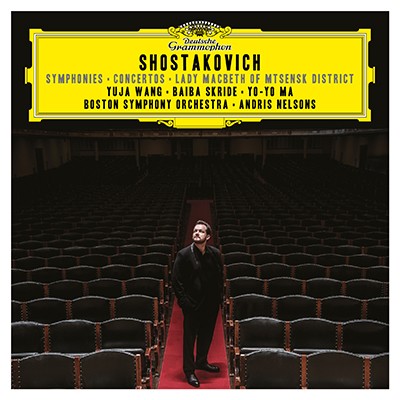Symphony No. 2 in B major 'To October - A Symphonic Dedication'
op. 14 (1927)Alexander Bezymensky (R). Jörg Morgener (G)
3(III=picc).2.2.2-4.3.3.1-timp.perc:tgl/SD/BD/cym/glsp/siren-strings
Abbreviations (PDF)
VAAP
It is astonishing that one of Shostakovich’s earliest ‘official’ scores, composed for a special concert to celebrate the 10th anniversary of the 1917 Bolshevik Revolution, is also one of his most original and modernist scores. The gaudy colours and wild experimental textures of this one-movement symphony, its strange avant-garde dissonances and washes of colour mixed with glowing late romantic harmonies, make this one of the most unusual choral and orchestral works of the early 20th century.
The work opens with a mysterious heterophonic pseudo-fugue in which layer after layer of stringed instruments enter one after another, each new voice being slightly higher and faster in tempo. It is almost impossible to hear the individual notes in the complex web of sound. Later there is another equally curious multi-voice fugue, this time beginning in the wind-section, at the climax of which every instrument in the orchestra seems to be playing its own music. The resulting cacophony is brilliantly calculated to hold together both as drama and as a structure in sound. This is real music, however unexpected.
Behind the strangeness of the different episodes, there is an audible ghost of a traditional sonata form and the outlines of traditional symphonic rhetoric and gestures, and this is what holds the symphony together. After a whole series of increasingly challenging orchestral episodes, the music suddenly collapses on to a lonely violin-cadenza, after which the most unexpected sound in the symphony – a factory siren summoning the workers to work in the morning - leads to a mighty and extremely jagged choral hymn in praise of Lenin and the October Revolution. The vocal writing here varies wildly between the extremes of old-fashioned singing, and shrill shouting and yelling. In the coda, Shostakovich piles Pelion upon Ossa as a sequence of colourful and grandiose orchestral endings tumble over one another to have the last say.
Note by Gerard McBurney

Boston Symphony Orchestra / Tanglewood Festival Chorus / Andris Nelsons
DG 4866649
